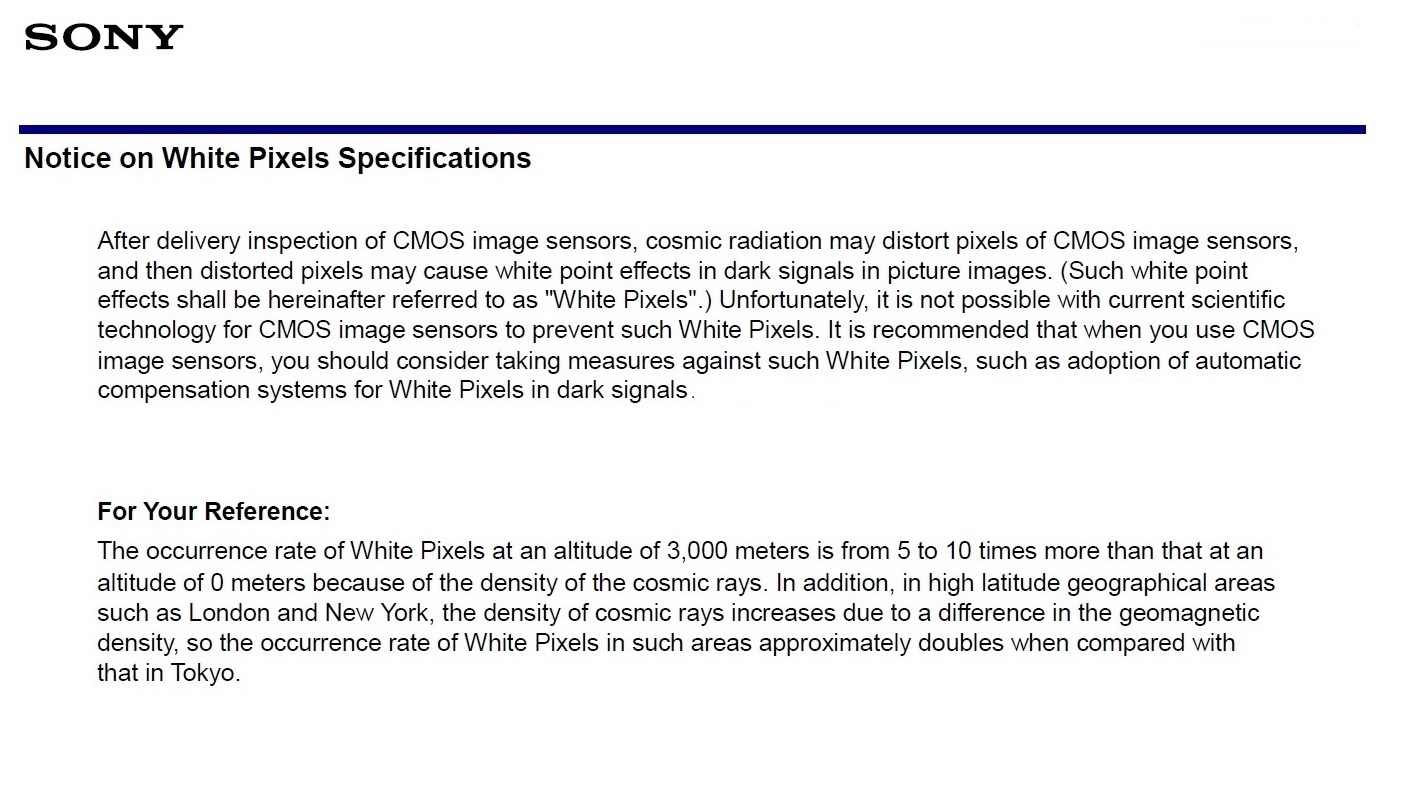Dashmellow
Well-Known Member
- Joined
- Sep 22, 2013
- Messages
- 18,337
- Reaction score
- 18,970
- Location
- Uncanny Valley (●_●)
- Country
- United States
- Dash Cam
- Umpteen
The challenge with the manual factory calibration is when they do them in the factory on a brand new sensor, not every bright pixel shows up in such a short time
as an FYI all sensors have this, Sony acknowledge that it is impossible to avoid based on current manufacturing technology and consider it to be normal, there are other variables as well, see below
the calibration process (calibration is probably an inaccurate description but that's how it is termed) does not actually calibrate the sensor but masks the effect by mapping which pixels show this issue and when the pixels around the affected pixel are dark or light (whichever the case may be) turn off the affected pixel, when they tried an automated process to dynamically mask the pixels as that is an available option in the SDK but they found that when they used it there was a negative impact on overall image quality, it does work fine on some other model sensors so yes should be something that can be improved. We questioned the engineer about this in the past and the answer was still to do it manually as there hadn't been any progress made on the automated method. That only changed recently. Just wait a bit longer and I'm sure it can be sorted.
Sony Doc:

The effect of cosmic rays is real but in practical terms, electronics errors from them is a fairly rare phenomenon. If that were not the case our computers would be crashing constantly and we would be seeing white pixels everywhere like on our smartphones and other electronics.
This disclaimer from SONY is a bit misleading if you don't pay attention to what it is actually saying. "For your reference", - 3,000 meters happens to be the height of the summit of Mount Everest.
